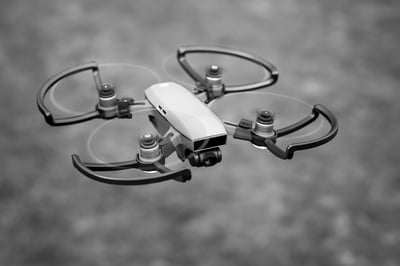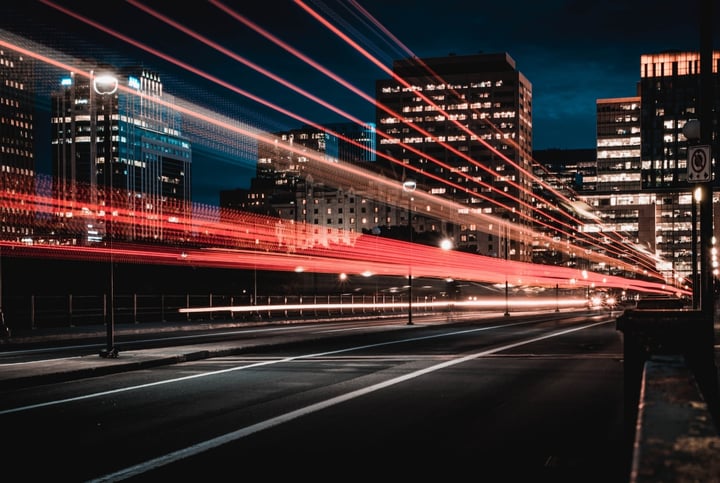 Increased surveillance at minimal cost for police drones
Increased surveillance at minimal cost for police drones
Police budget cuts often mean operational activities are put at risk, unless a logical, viable alternative is found. Police helicopters for event surveillance or pursuit are often deemed too expensive for many regions. If costs are an issue, a logical efficiency is to use live-streaming from drones.
Broadcasting drones increase surveillance, at minimal cost. They increase the periphery of vision in the sky and can broadcasting instantaneously to the police control centre. This drone application cost-efficiently covers many police roles in outdoor events, including crowd surveillance and control at large gatherings. Drones can also be used to finding missing people or aid pursuit with a live aerial view.
It can cost over £3,000 per hour to fly a SeaKing helicopter, whereas a drone flight can be at least 10 times lower. On acquiring a drone, an HD camera and the ZAO-s live streaming equipment, the police force could see a financial return on investment within one sortie.
Police drones increase speed and safety
Although a helicopter can be scrambled and at the scene very quickly, if a trained police officer has a drone in the back of their vehicle, it can be deployed immediatly from the scene.
Extra drones flying from a helicopter can increase helicopter crew safety and provide support. By launching drones the police crew are kept at a safe distance, while the drones approach situations, which would be unwise for a helicopter and its crew. These situations could include gunfire, fire or explosives, unsafe buildings and infrastructure. They can remotely provide first visuals to investigate potentially dangerous situations like bomb alerts or incendiary devices.
Police body-cams improve mobile recording
In April 2019 the Dutch Police force announced that all police would receive bodycams within the year. Their reasons for implementing it were that it offers a de-escalation tool. By reminding people that everything they are saying and doing is being recorded, it often calms the situation down. It can also provide evidence gathering for punishable behaviour.
Current technology for live streaming of bodycams is currently unreliable, it is therefore often in practise limited to recording of events. Soliton is working with Airbus on a critical app to enable android walkie-talkies to both livestream reliably, encoded and with high quality videos.
Critical situations require live and reliable communications
Traditional RF live streaming, which relied on line of sight can restrict coverage and quality can be compromised. By switching to 4G connections with a triple SIM card, working as one unit, this can vastly improve transmissions. Reliability of transmission would become the new standard. It could enable teams to monitor in more remote and isolated/unusual locations, than with traditional filming.
Filming from the sky (drones or helicopters) has proven successful with excellent reception and transmission, with uninterrupted access to 4G.
Improve covert operations and SWAT safety through intelligent use of mobile infra-red broadcasting
Unfortunately we can’t see around corners, through walls, or behind objects, but have you ever considered the possibility of using infra-red? If you have a camera with an infra-red, you can broadcast infra-red images to detect heat given off by a person or object and suddenly your surveillance operations and police safety take a new turn. Your SWAT team and the remote observing control centre can count and locate suspects in a building, before the team enter, dramatically increasing their safety and efficiency.
Improving safety in public spaces
Ever felt you’re being watched? You probably are. Fixed surveillance cameras in public spaces are increasing, but the development is stunted. Effectiveness would be improved by combining with bodycams and broadcasting drones, enabling integration within the crowd and access outside of the limitations of the fixed camera, enabling high-quality filtered sound recordings.
In 2007, the UK spent approximately 20 per cent of its criminal justice budget on video surveillance. The June 2007 attempted terror attacks in London reignited discussions of surveillance cameras and their role in the effort to prevent terrorism.
In China in 2017 there were around 170 million CCTV cameras and an estimated 400 million new ones will be installed in the next three years. [3]. China has what it calls "the world's biggest camera surveillance network". [4]Mobile surveillance using HD cameras with Soliton encoders would increase effectiveness for live broadcasting from drones and police robots.
Encrypted broadcasting is essential for security purposes
When a police officer wants to visually show a scene or incident, he needs the option to share this with the command centre and no one else. It’s not judicious for a police officer to use Facebook Live streaming of a crime scene! The police force needs private and secure communication tools, ensuring on site footage is for police eyes only. Secure encryption of live feeds, ensures that the footage is safe, unadulterated, admissible in court and fed directly into the secure control centre. This is typically used by Special ops with either a Soliton mobile app from an android device, or from an HD camera with Soliton decoder.
Combining facial recognition with live streaming
European police forces aren’t capturing the full potential of facial recognition software. The missing requirement is HD. Imagine coupling facial recognition into your IT eco system, by using mobile HD broadcast, quality filming. Using HD cameras with Soliton’s encoding devices will enable broadcast quality videos.
Facial reconition software can work with the high quality livestreamed videos. Police can use this technology to identify suspects, track missing persons, identify criminals with fake ID… The possibilities for quick ID (without the need for fingerprints back at the station), enables your workforce to improve both their efficiency and also their safety, by recognising dangerous offenders on the streets.
In China, private companies have access to a government facial recognition database of 700 million people (half its population in 2017). Almost everyone with identification in China and is over the age of 18 is on the national face recognition database. People offer their facial recognition compliance in exchange for convenience, e.g. To unlock their phone or log into smart devices, but increasingly to pay bills, gain access to work and other secure premises…
Currently facial recognition software can recognise one face from millions, within a second. [1] It also can see the differences between identical twins.[2]
[1] https://www.youtube.com/watch?v=nT_PXjLol_8 – The Economist. 1st November 2017
[2] https://youtu.be/J1NL246P9Vg - Can twins trick facial recognition?
[3] https://www.youtube.com/watch?v=Fq1SEqNT-7c - China: "the world's biggest camera surveillance network" - BBC News
[4] https://www.youtube.com/watch?v=pNf4-d6fDoY




